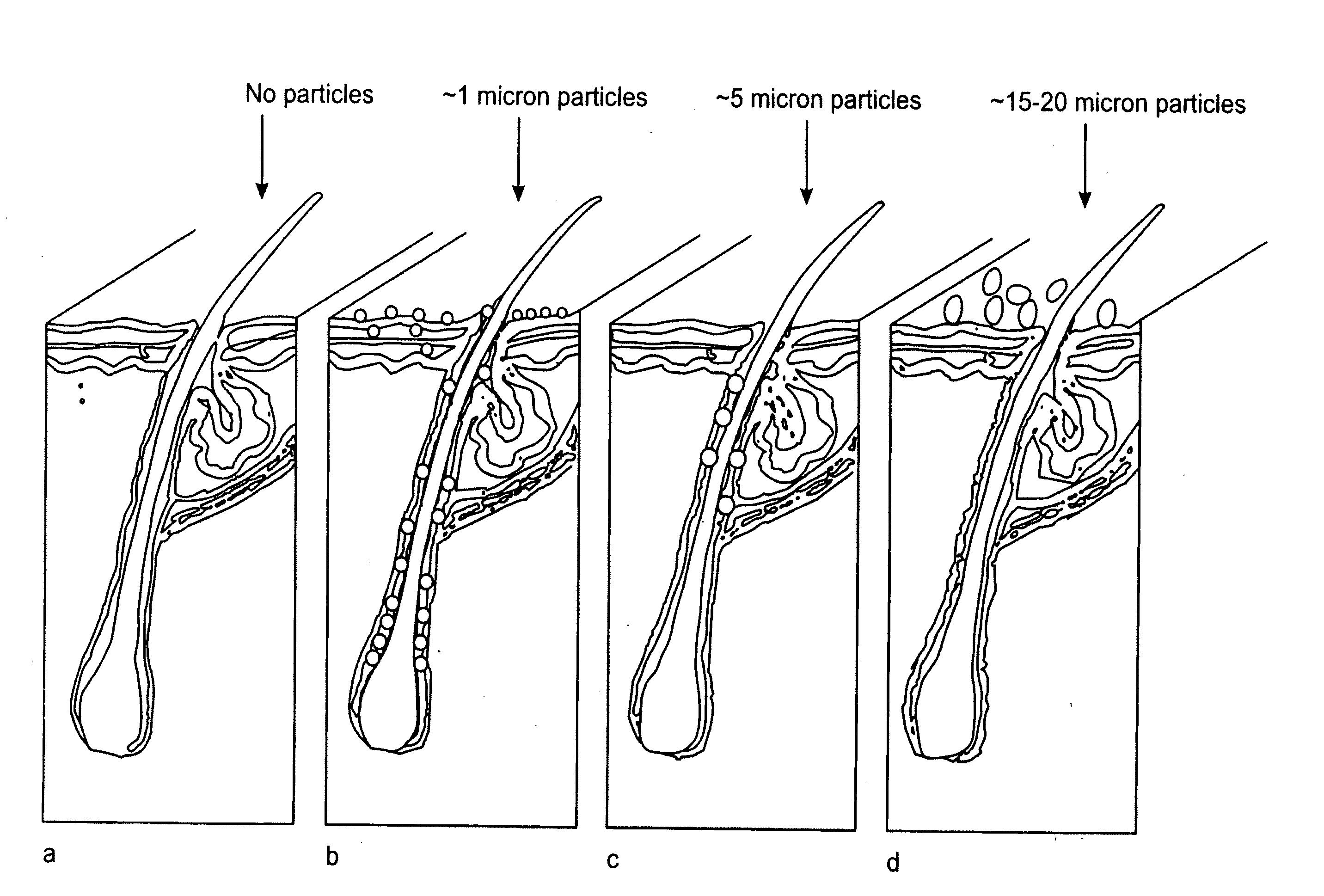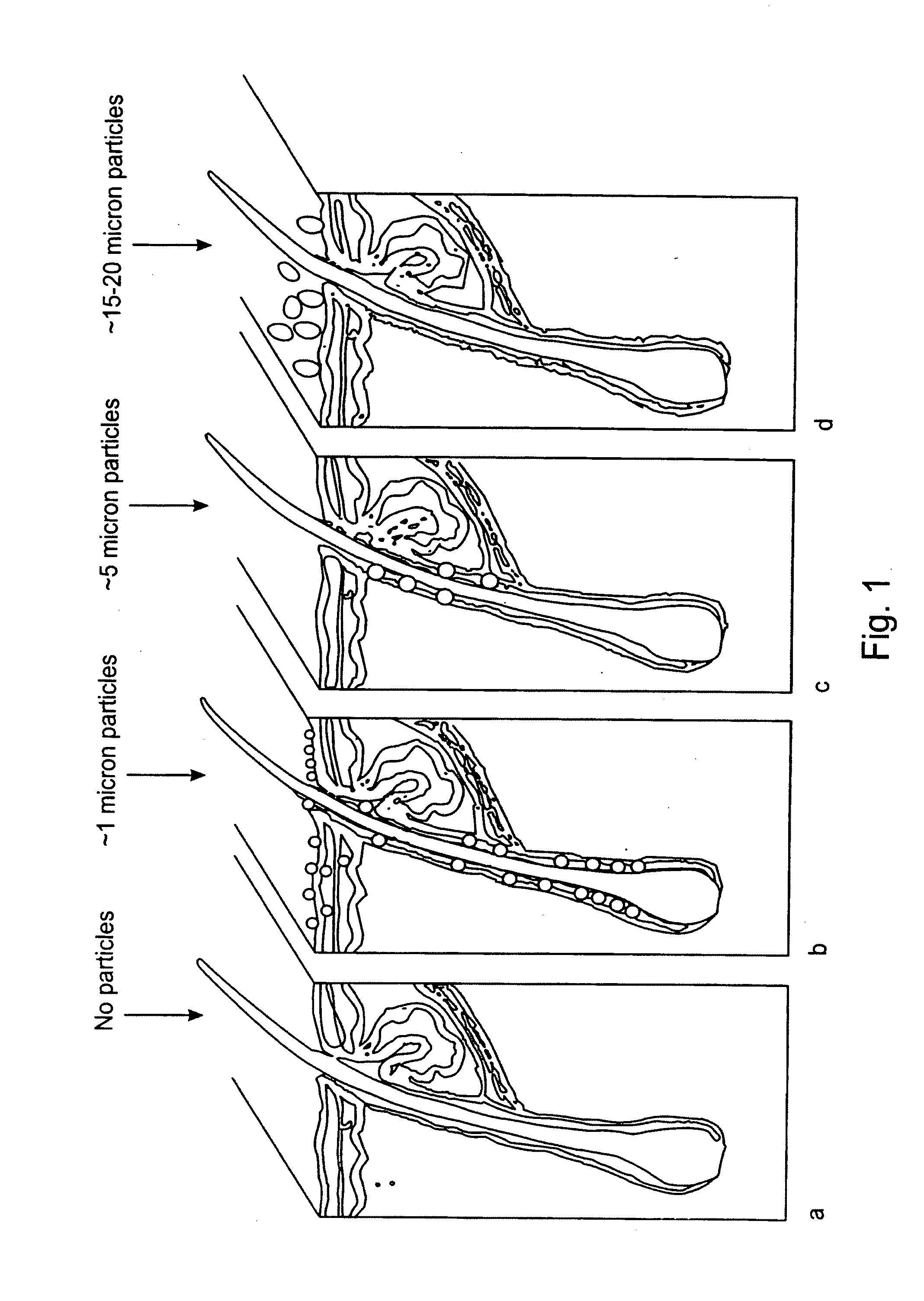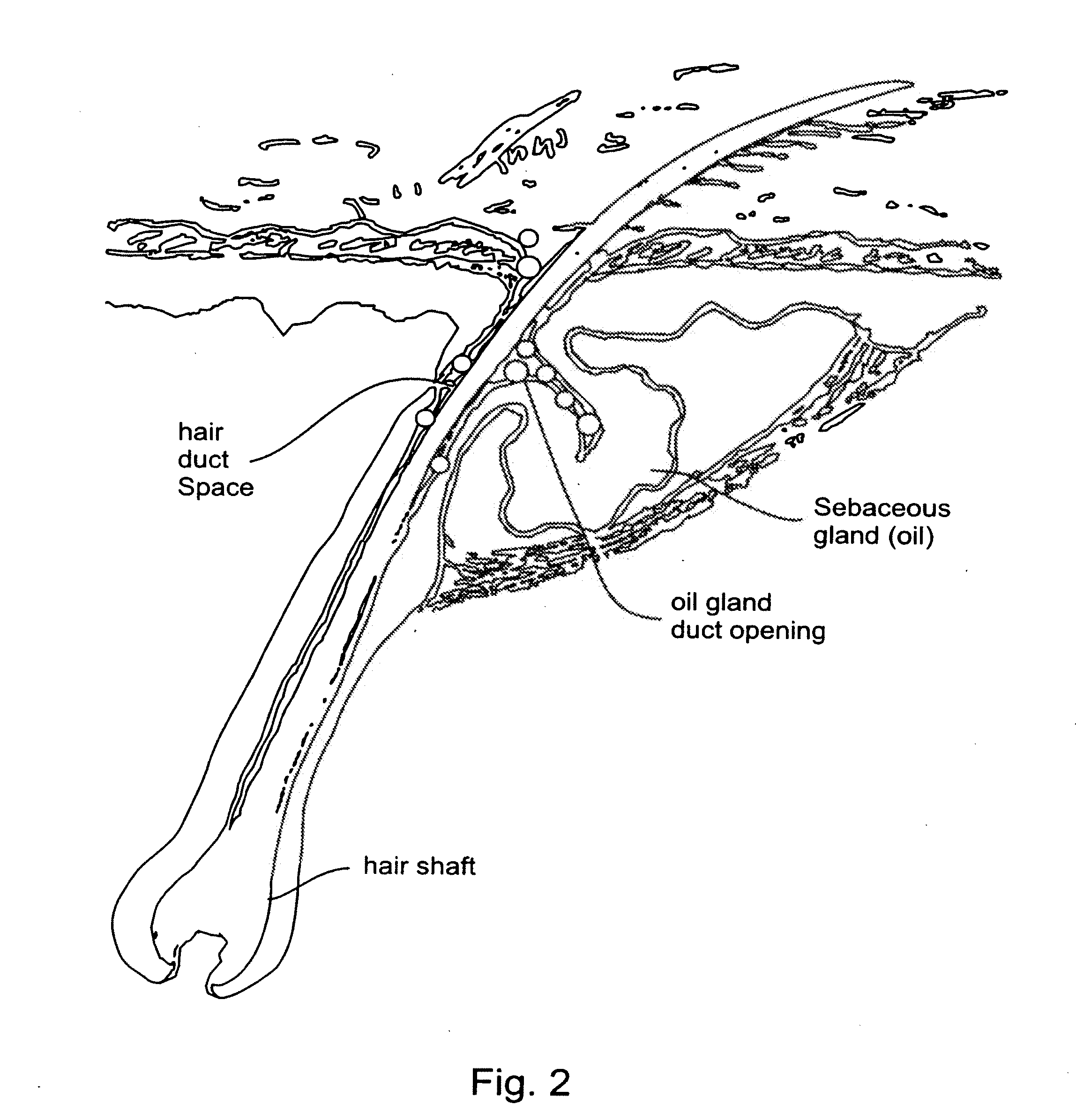Process for treatment of psoriasis
a technology for psoriasis and treatment, applied in the field of psoriasis treatment, can solve the problems of only partial permanent hair reduction, damage to surrounding tissues, and process tendencies to damage hair, so as to improve the effect of virtually any hair removal process, eliminate hair, and enable more hair removal
- Summary
- Abstract
- Description
- Claims
- Application Information
AI Technical Summary
Benefits of technology
Problems solved by technology
Method used
Image
Examples
Embodiment Construction
[0032]The following detailed description is of the best presently contemplated mode of carrying out the invention. This description is not to be taken in a limiting sense, but is made merely for the purpose of illustrating the general principles of the invention. The scope of the invention is best defined by the appended claims.
[0033]In a preferred embodiment, the present invention is directed to a process for producing temporary or permanent reduction or removal, in human or mammalian skin, of some or all of the hairs growing in hair follicles and exiting the skin through hair ducts. In a preferred embodiment the process produces little or no permanent injury or damage to nearby skin tissue. Substantially only the hair follicle and immediately surrounding tissue are damaged.
[0034]In a process according to one embodiment of the present invention, an agent may be selected which is capable of penetrating the hair ducts and attaching, bonding or otherwise becoming incorporated into the...
PUM
 Login to View More
Login to View More Abstract
Description
Claims
Application Information
 Login to View More
Login to View More - R&D
- Intellectual Property
- Life Sciences
- Materials
- Tech Scout
- Unparalleled Data Quality
- Higher Quality Content
- 60% Fewer Hallucinations
Browse by: Latest US Patents, China's latest patents, Technical Efficacy Thesaurus, Application Domain, Technology Topic, Popular Technical Reports.
© 2025 PatSnap. All rights reserved.Legal|Privacy policy|Modern Slavery Act Transparency Statement|Sitemap|About US| Contact US: help@patsnap.com



